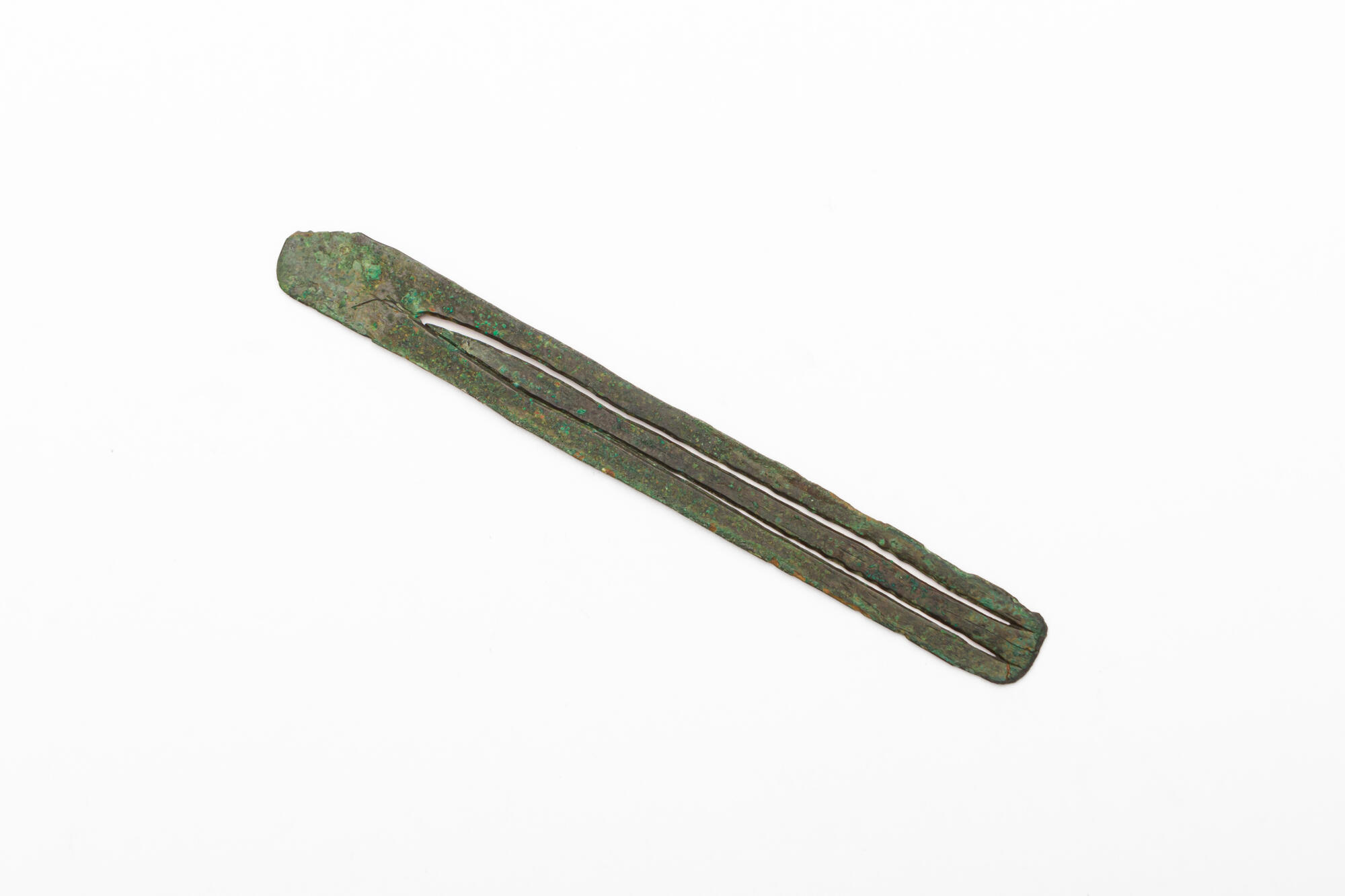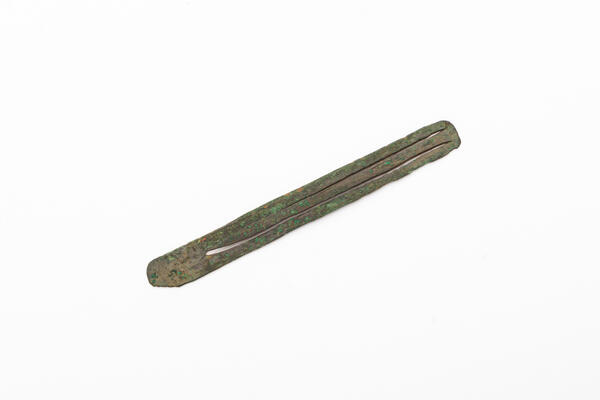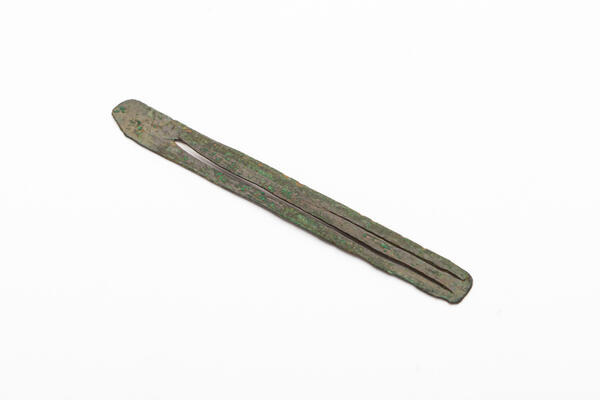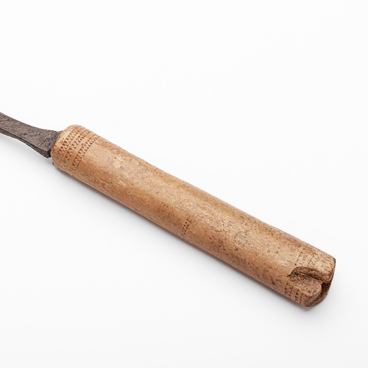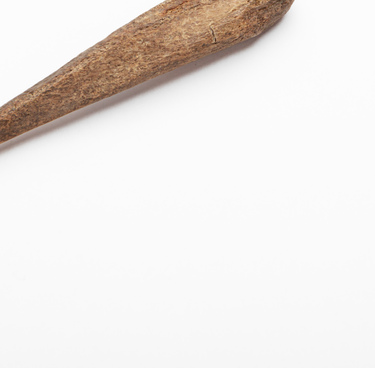The mouth harp appeared over 5,000 years ago and is one of the earliest musical instruments in the world. Mouth harps were common in Asia and Oceania, from where they reached Russia, Europe, Latin and North America through trade. The mouth harp is the main traditional musical instrument of the indigenous peoples of Central Siberia, the Volga region, Chukotka, Kamchatka, Sakhalin and the Middle Yenisey.
The mouth harp from the museum’s collection was found in 1978 at the archaeological site of the Idnakar hillfort near Soldyr in Udmurtia. The mouth harp has its own name in almost every country: parmupill in Estonia, ooz kamuz in Kyrgyzstan, khomus in Yakutia, morchang in India and guimbarde in many European countries. On Russian soil, the mouth harp was known as vargan or zubanka.
Russian mouth harps come in two main types — the ones made of plates and the arc-shaped ones. The exhibition presents a mouth harp of the first type — a small bronze plate with a tongue carved in the center. To play the harp, the musician presses it to the teeth and strikes the tongue of the instrument with the index finger. The sound vibrates in the musician’s airways, head and diaphragm, which act as a resonator.
Playing the mouth harp is a pacifying activity, which immerses people in a state of meditation and trance, which is why sorcerers and shamans still use this instrument during their rituals. Playing the instrument requires no special training and is simple and available to everyone.
The Udmurt culture has other musical instruments apart from the mouth harp. The archaeological excavations in a 10th–century dwelling of the Idnakar settlement produced bridges with five grooves, however, it is impossible to reconstruct the ancient instrument they were used in.
Udmurt folklore has many tales, legends, epics and fairy tales. The folklore reflects and conveys the history, culture, lifestyle and mentality of this old people. Finds made in the ancient hillfort of Idnakar help to envision the way the Udmurts played the instruments. Other finds include dice with drilled holes and bone plates, which could be ancestors of modern figure skates.
